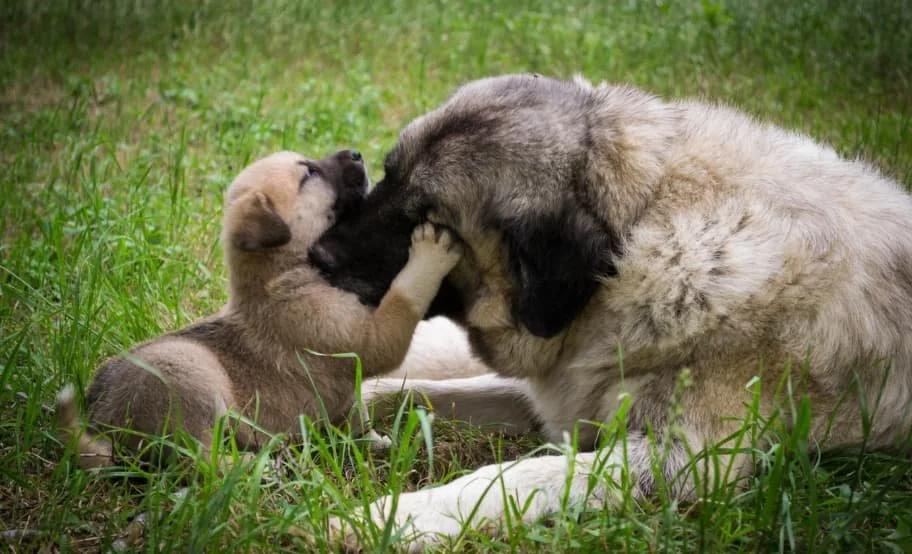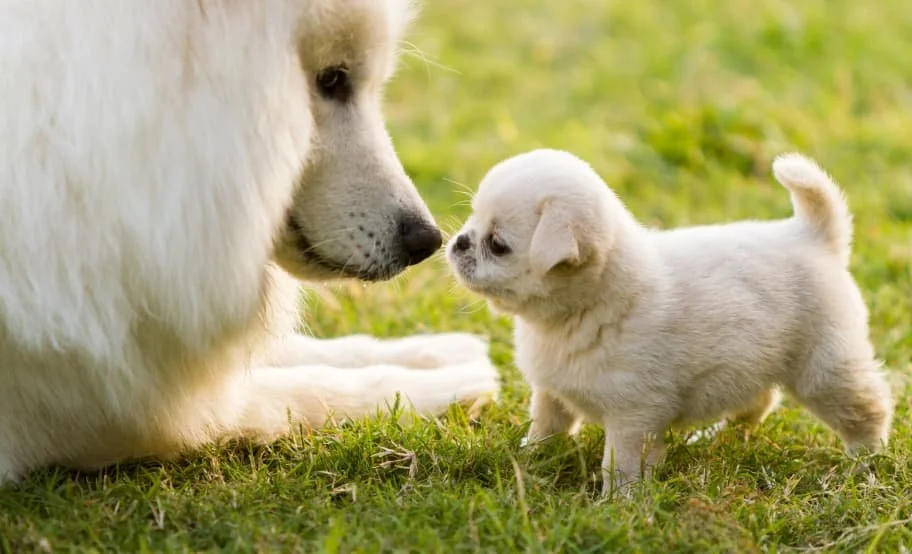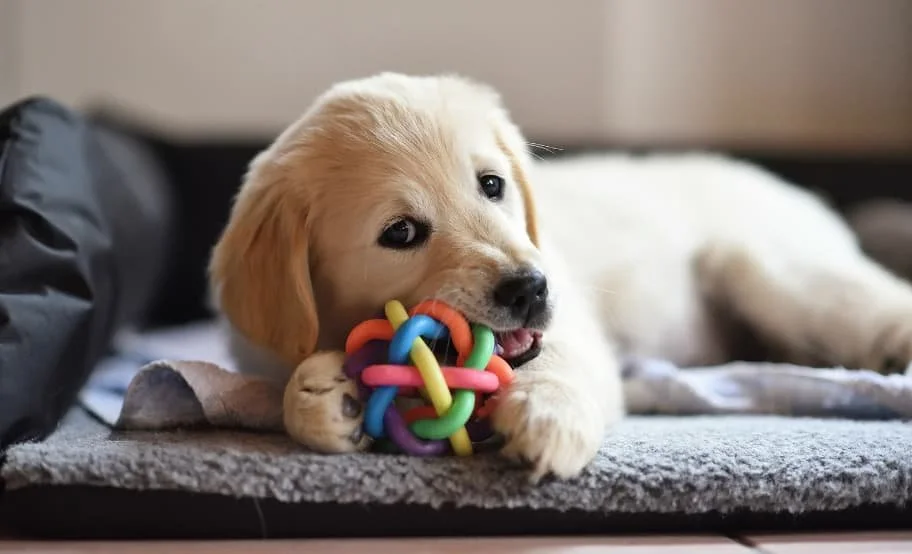How to Introduce a Puppy to a Dominant Dog Without Drama
Bringing a new puppy home is exciting, but if you already have a dominant dog, it can also feel stressful. And for good reason. The way you handle those first few meetings can make or break the relationship between your dogs. A bad introduction could lead to fear, fights, or long-term tension. But a calm, well-planned one sets the tone for mutual respect and maybe even friendship. Dominant dogs tend to be confident and territorial. They like structure and don’t always tolerate chaos well. And let’s be honest, puppies are basically walking, barking chaos machines.
That’s why it’s critical to manage the energy between them. It’s not about forcing them to love each other right away. It’s about creating a safe, neutral environment where both dogs feel respected. Done right, you’ll set the groundwork for trust. Done wrong, and you might end up with a power struggle in your living room. This guide will walk you through every step, from pre-planning to long-term success, so you can keep things peaceful and positive.
Understanding Dominant Dog Behavior
Before you start introductions, it’s helpful to understand what “dominant” really means. A dominant dog isn’t necessarily aggressive or mean. More often, they’re just confident, assertive, and clear about what they want.
They may guard toys or food, control access to doorways or couches, and get annoyed when other dogs invade their space or react to over-excited behavior from others. That’s not bad behavior, it’s just a personality style. And for the most part, dominant dogs thrive when rules are clear and the environment is calm.
Now, introduce a wiggly puppy into the mix, a creature that jumps on faces, bites tails, and doesn’t yet know the rules, and you can see where problems might start. But here’s the good news: dominant dogs can actually be excellent teachers. They often help shape a puppy’s manners better than any human can.
Your job is to supervise the process and make sure the dominant dog doesn’t feel overwhelmed or disrespected, while also protecting the puppy from harsh corrections. Balance is key. You're not trying to change your dominant dog, you’re just helping both animals understand how to live together peacefully.
What to Do Before Bringing the Puppy Home
Good introductions start long before the dogs actually meet. The prep work you do ahead of time can make everything easier.
Choose the right puppy
This sounds harsh, but not every puppy fits with every dog. If your current dog is older, less tolerant, or easily overwhelmed, a super high-energy or pushy puppy might be the wrong match. Try to find a puppy whose temperament will complement, not challenge, your older dog’s personality.
Give your dominant dog some refresher training
Before the puppy shows up, brush up on basic commands like “leave it,” “place,” and “come.” This gives you better control during introductions and helps your dominant dog focus on you rather than just the puppy.
Set up separate spaces
Have a plan for keeping the dogs apart when needed. Baby gates, crates, or exercise pens help you manage interactions gradually. Don’t expect them to be besties on day one.
Remove high-value items
Before the puppy arrives, pick up anything your dominant dog might guard, like food bowls, chew toys, or beds. These can all become flashpoints if the puppy gets too curious.
Plan for a neutral meeting space
If possible, avoid doing the first introduction inside your home. Your dog likely sees that space as their territory. A walk around the block or a meet-up in a fenced yard is often a better choice. Preparation reduces surprises, and that helps both dogs feel more secure.
First Meeting: How to Set It Up Right
Now that you’ve done the prep work, it’s time for the actual introduction. Here’s how to do it in a way that keeps everyone calm and safe.
Go for a walk together: This is one of the easiest, most natural ways to introduce dogs. Have someone help you. One person handles the puppy, the other the dominant dog. Start walking at a distance where neither dog is pulling or reacting. Gradually walk closer together, letting them get used to each other’s presence without pressure.
Keep the leashes loose: A tight leash can create tension. Try to keep things relaxed. If your dog pulls or gets stiff, back up a bit and keep moving forward slowly.
Let them sniff, briefly: If the walk goes well, you can allow a short sniff session. Watch body language carefully. One or two sniffs, then call them apart. Repeat as needed, always ending interactions before tension builds.
Move to a fenced area if things are calm: If all’s going well, you can try a short off-leash session in a secure yard. Keep it short and sweet, 5 to 10 minutes tops, and end while both dogs are still relaxed.
Don’t rush it: Sometimes the first meeting is just about coexistence, not playtime. It’s okay if they don’t engage much right away. What matters is that they’re not hostile or anxious.
Reading Body Language During the Introduction
One of the most important skills during introductions is learning to read what your dogs are really saying. Here’s what to watch for:
Relaxed signs (good)
Loose body, wagging tails
Play bows (front end down, back end up)
Sniffing calmly, walking away afterward
Brief, gentle corrections from the older dog
Warning signs (slow things down)
Hard stares or frozen posture
Raised hackles
Growling or a stiff tail held high
The puppy repeatedly ignores signals
Your job is to intervene early, before things escalate. If your dominant dog growls or lip curls, calmly redirect the puppy. Don’t punish the older dog, growling is communication. It’s their way of setting boundaries.
If the puppy listens and backs off, that’s a great sign. If the puppy keeps pushing, you’ll need to guide them away and give everyone a break. Remember, the goal isn’t instant friendship. It’s peaceful coexistence. That starts with body language that says, “I see you, and I’m okay with you being here.”
What to Do If Things Go Sideways
Sometimes, even with the best setup and intentions, introductions between a puppy and a dominant dog don’t go as planned. It’s important to stay calm if things get tense. If your older dog snaps, snarls, or lunges at the puppy, interrupt the interaction calmly but firmly. Use a leash or a loud clap to create space between them. Avoid yelling or panicking, as this can escalate the situation. Once you’ve broken their focus, separate both dogs immediately. Give them time to decompress in separate rooms so they can settle their emotions.
It’s crucial not to punish your dominant dog for reacting. Their behavior is usually instinctual, not a sign of aggression or malice. Punishing them can actually damage the trust between you and create more anxiety in future interactions. After both dogs have had time to cool off, reassess the situation. Did the puppy ignore a warning? Was the older dog overwhelmed by too much too soon? Try again with more distance and very short, positive interactions. You may need to repeat this gradual reintroduction process several times before the dogs build comfort and trust.
And remember, if you're feeling unsure or nervous, it's completely okay to bring in a professional trainer to help guide and supervise the process.
Helping the Puppy Understand Boundaries
Puppies are adorable but clueless. They don’t know the rules, and sometimes, they annoy the heck out of older dogs.
That’s why your role as a referee is so important. You need to teach the puppy when to approach, when to back off, and when to chill. Here are some ways to do that:
Interrupt rude behavior: If the puppy is jumping on your dominant dog’s face, biting ears, or getting too pushy, redirect with a toy or take them to a separate area.
Use “place” or “settle” commands: Teaching the puppy to chill out on a bed or mat gives both dogs breathing room.
Reward calm behavior near the older dog: Quiet sitting, lying down, or gentle sniffing should get lots of praise and treats.
Let your dominant dog correct but only lightly: A growl or air snap is normal dog language. But if it turns into intense aggression, you need to step in.
Puppies learn fast when the rules are clear. And when the dominant dog sees you keeping things in check, they’ll feel more relaxed, too.
Maintaining a Peaceful Household
Once the introductions are complete, the real work begins, creating a home where both your puppy and dominant dog feel secure and respected. Daily routines play a big role in building that harmony.
Start by feeding your dogs separately. This prevents food guarding and helps establish predictable mealtime routines. Each dog should also have their own crate or quiet space, a place where they can retreat and feel safe without being bothered. During the first few weeks, it’s important to supervise all interactions. Avoid leaving the dogs alone together until you’re confident in their relationship and comfort level.
Consistency is key. Stick to a regular schedule for meals, walks, and rest, Dogs thrive when they know what to expect. And don’t forget about individual attention. Your older dog still needs love and reassurance, while your puppy needs focused training and bonding time. At first, it might feel like a lot to manage, but as your dogs settle into their new rhythm, a peaceful coexistence will start to feel more natural.
Signs Your Dogs Are Becoming Friends
Once things settle down, it’s rewarding to see signs that your dogs are starting to bond. One of the most encouraging indicators is mutual play, chasing each other, gentle wrestling, or taking turns with toys, all show that both dogs are comfortable and enjoying each other’s company. Another great sign is when they relax in each other’s presence. If they’re napping on the same couch or just hanging out nearby without tension, it means trust is building.
Pay attention to how they share space. If your dominant dog allows the puppy to sit close without growling or showing signs of discomfort, that’s a clear step forward. You might also notice your puppy mimicking the older dog’s behavior. This kind of modeling is common and, when positive, is definitely something to celebrate.
Keep in mind that not every pair becomes best friends. Some dogs simply coexist peacefully rather than forming a tight bond, and that’s completely okay. A calm, respectful relationship is still a big win.
Conclusion
Introducing a puppy to a dominant dog isn’t always smooth, but it’s totally doable with the right approach. Respect your dominant dog’s boundaries, manage the puppy’s energy, and give both animals space to figure things out. Your job is to guide, not force.
Be patient. Some dogs click in days. Others take weeks or months. Consistency, calm energy, and supervision will get you there. If you hit a wall, don’t be afraid to reach out to a trainer, especially one who specializes in multi-dog households.
At the end of the day, you’re building more than just tolerance. You’re laying the foundation for a home where both dogs feel secure, understood, and part of the pack.



